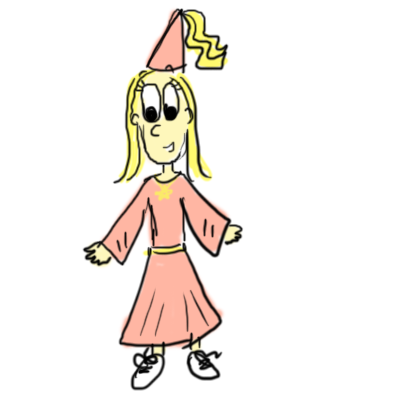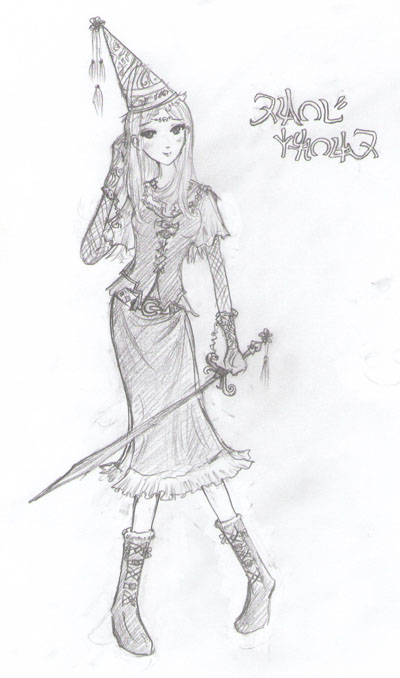The entire body of human knowledge has long since surpassed the point where any one person could ever hope to understand any significant proportion of it. This is apparent from the greater and greater levels of specialization in people’s everyday lives, despite surface appearances that the general populace is becoming more well-rounded in its knowledge. The truth is, people individually do not know much more (in quantity) than people really have; the knowledge that is gained of new technologies and such replaces knowledge that is perhaps less useful. What passes as broad knowledge is actually the accessibility to that knowledge, not the possession of it: humans are learning more methods of archiving and subsequently finding information, rather than better methods of retaining it within the mind.
The externalization of knowledge is hardly a new innovation. As I have often mentioned in conversations, I believe that evolution works in self-similar stages – think of the zooming-out sequence in Men in Black or, if you’ve seen it, the narrated preview for the upcoming game “Spore.” Basically, single cells, each of which used to know everything about day-to-day cell life, came together in a cooperative society, and the repository of knowledge turned into the ganglion or brain of the larger animal. The ganglion cells themselves – the brain cells – have no intrinsic knowledge of the knowledge that they store; the other cells access and use this information through signals, but they do not hold the knowledge within themselves.
Likewise, multi-organismal society is now at a point where it can no longer be like a brainless jellyfish. What is arising naturally are large repositories of knowledge, such as libraries, succeeded now by the larger internet. Knowledge is not only a sitting body but a dynamic conversation that exists on a time-scale and size-scale so large that people may view it as being a fixed entity.
The current methods of information exchange are very nice, but there is one fatal flaw: no meta-analysis outside of our own selves, the fundamental “cells” of the organism of humankind. The genius of human existence is the ability to take the “wikipedia” of inputs from all the five senses, compounded over many years, and distill out higher-level conclusions and theories.
Current knowledge databases such as, say, PubMed or ISI, which compile more research than any person could ever hope to even click on, not to mention read or understand, are rapidly becoming unwieldy. In the rush to create knowledge, there is not enough sustained effort to remold it. I am confident that many secrets and patterns of humanity and human disease already have enough research put in, if only that research were combined effectively and the correct connections made. And if the published literature is insufficient, then it is the combined knowledge and observations of the researchers themselves that would hold the answers. The “scientific hero” model dating from just a century ago, and epitomized by the Nobel Prize, is completely out-of-date, and the gradual lifting of the proprietary attitude towards science through the greater availability of full text publications, wikis, copyleft / free software, and wide-ranging collaboration confirms that the new era of knowledge will be built not by forefathers upon marble pedestals but by the average Joe.
Who, then, will be charged with the requisite meta-analysis that I alluded to earlier? In my belief, the entity to serve such a function is none other than a computer. Robotics has its triumphs in automated arms and belts that power current manufacturing by rapidly and accurately processing raw materials towards the production of just about every product – this is the only way production has been able to keep up with design and demand. The corresponding state-of-the-art for data which exists virtually rather than physically (virtual information being both encoded in computers and in human minds) is basically only indexing and searching. Wikipedia does not, to my knowledge, try to sift through its cross-references to discover the meaning of human existence or better ways for physics to inform biology or evaluate the best system of government. But the data is already there! For a human being, it takes so many years to write a single dissertation which looks upon a sliver of the pie of knowledge, and in turn is read by only a sliver of the people who ought to be reading it.
What is needed for this project is not artificial intelligence that mimics human thought, per se – the brain does not think in the manner of cells. What is needed is a new paradigm of thought, which is simpler yet more powerful than human thought. Whereas cells are concerned about the minutiae about particles and neighboring cells and fluid flows, the brain ignores most of that and considers the hunger level of the entire body, the status of sheep in the meadow which none of the cells know about, and the relative attractiveness of members of the opposite gender, which certainly cells would not understand at all. Not just the scale, but the nature of the thoughts transcend the capabilities of any contributing member of the knowledge.
The idea of a “brain” for an entire species has been entertained many times before, but usually in the context of some dominating hive-queen. There is nowhere in the description above that suggests that such a central unit would ever have to be dominant in function; nor that it even has to be “alive” in the way we understand it. It is just that, now with humanity trying to deal with problems of the entire body of its billions of people and with the Earth as a whole, there must be a better way of thinking globally than using our feeble minds which have yielded brazenly useless solutions such as the recent agreement to cut emissions by 50% by 2050 (what human can conceive of 42 years of future events? And why is only one small part of the problem being addressed)? Without a guiding mind that can at least put together the crises in fish, bees, the atmosphere, forests, rivers, trash, toxic chemicals, radiation, soil quality, and so forth, in a meaningful way, how will the environmental issue ever be tackled effectively? All of these issues are interconnected, but people only become interested in them one at a time, or in all of them with no particular plan or comprehensive understanding. Synthesizing the next layer of knowledge is probably the only way the human race can make peace with the world and with itself.


